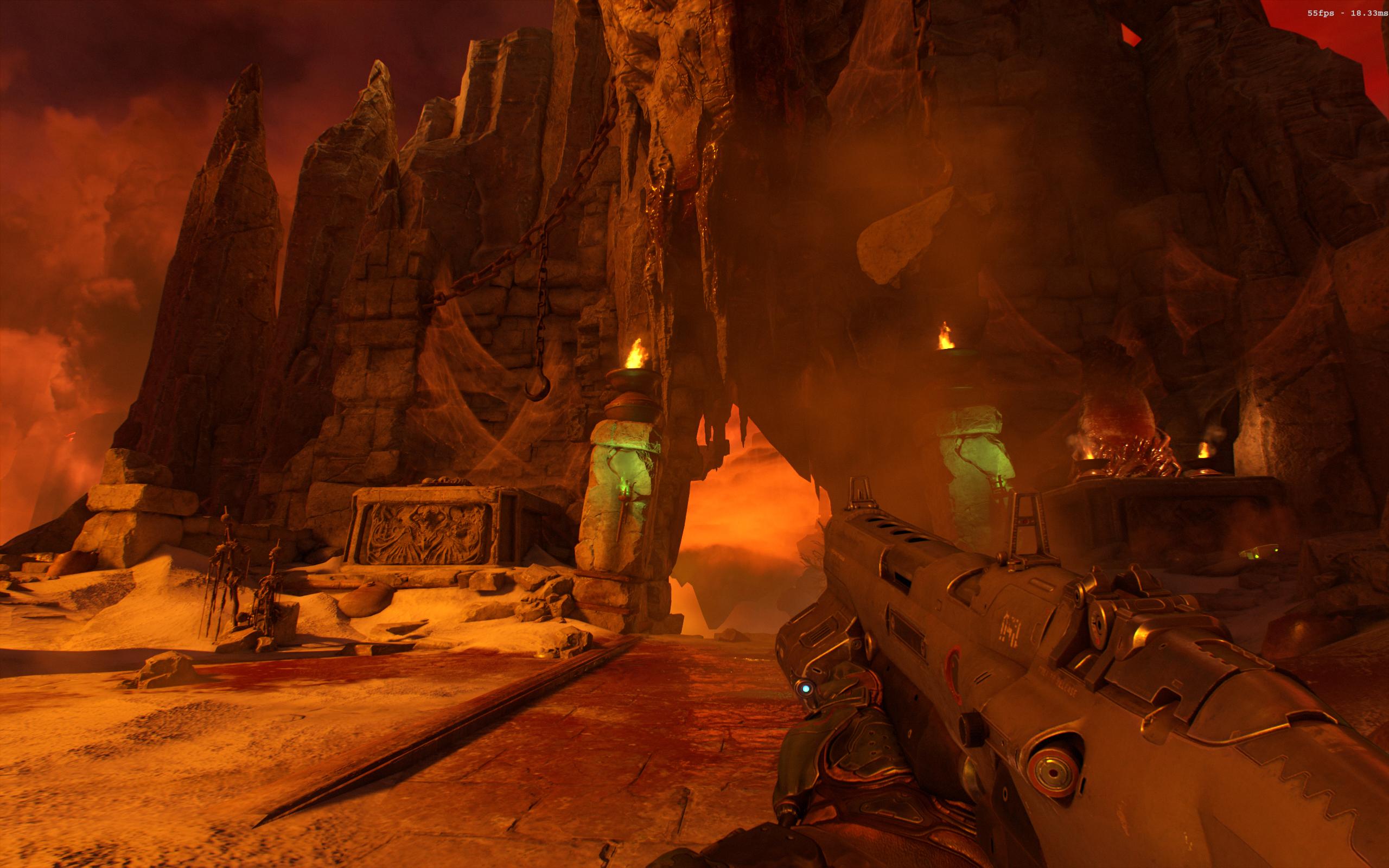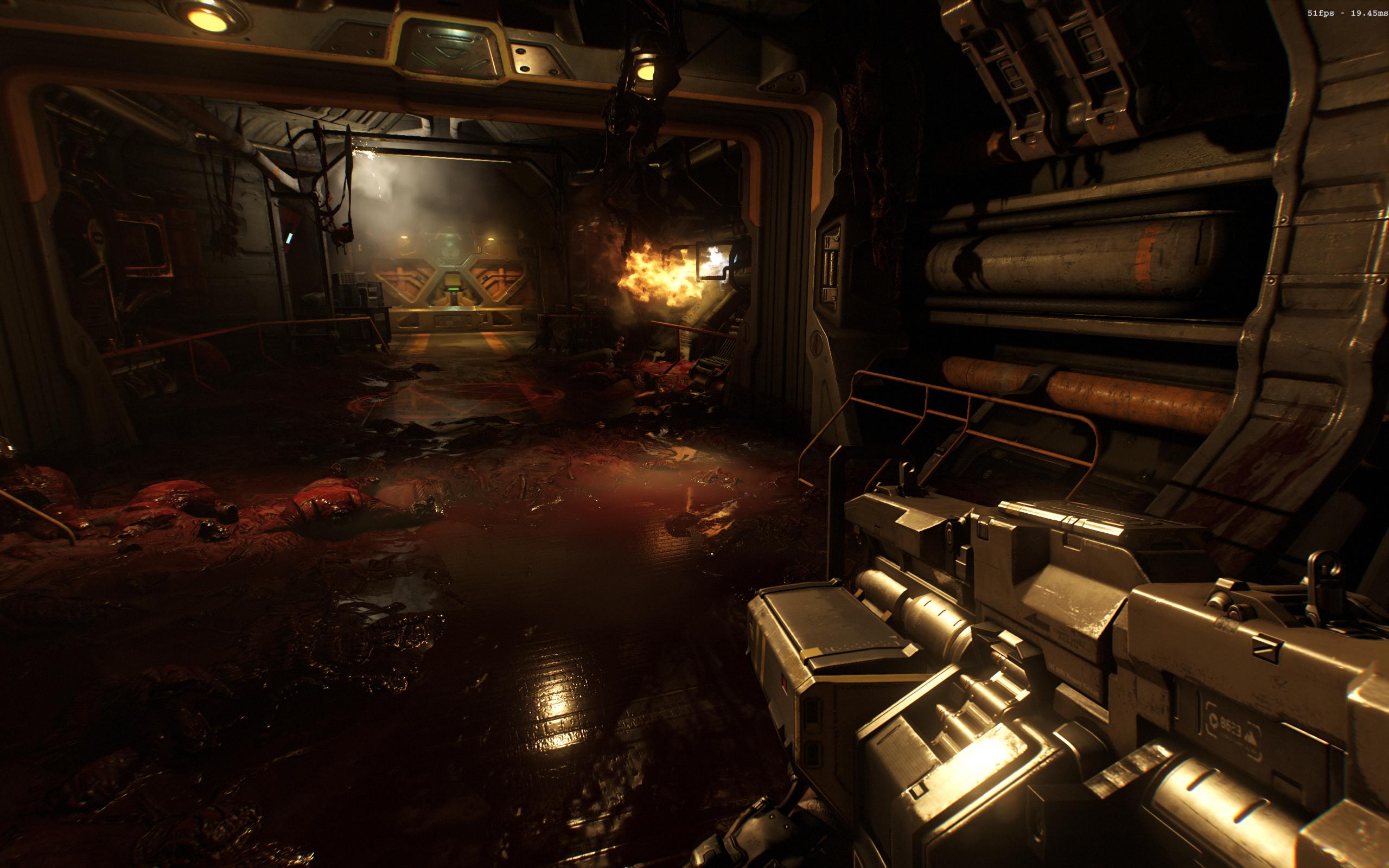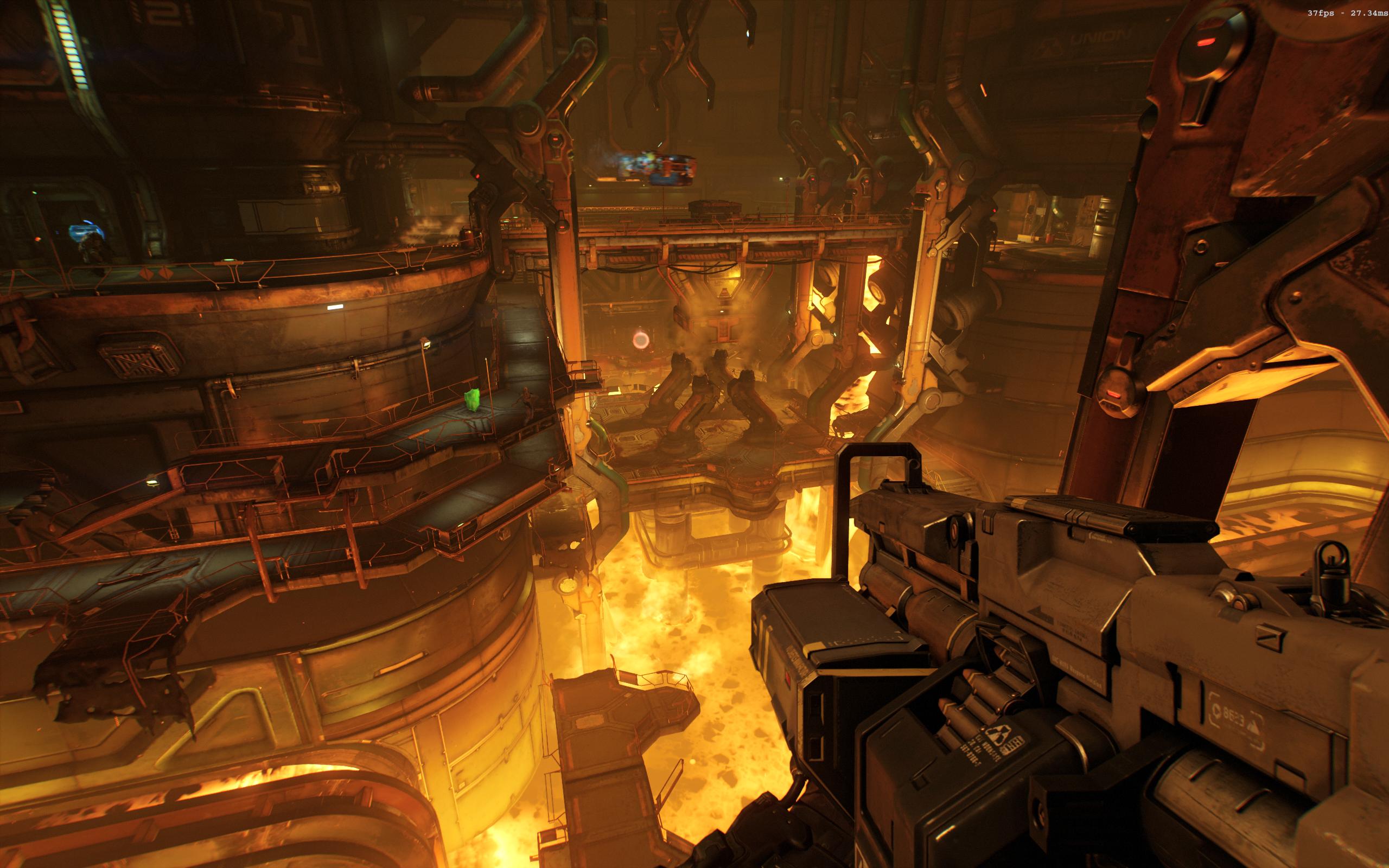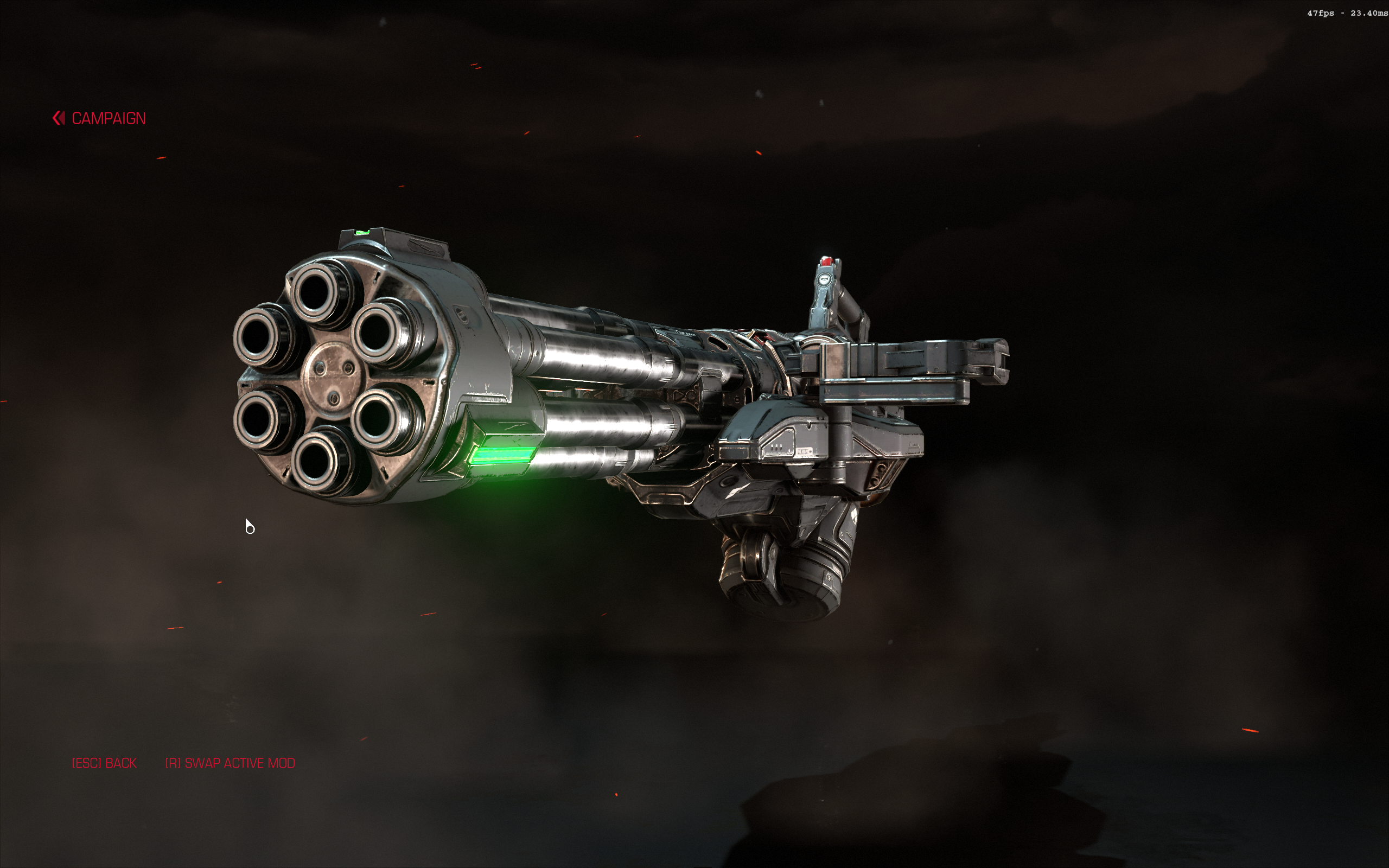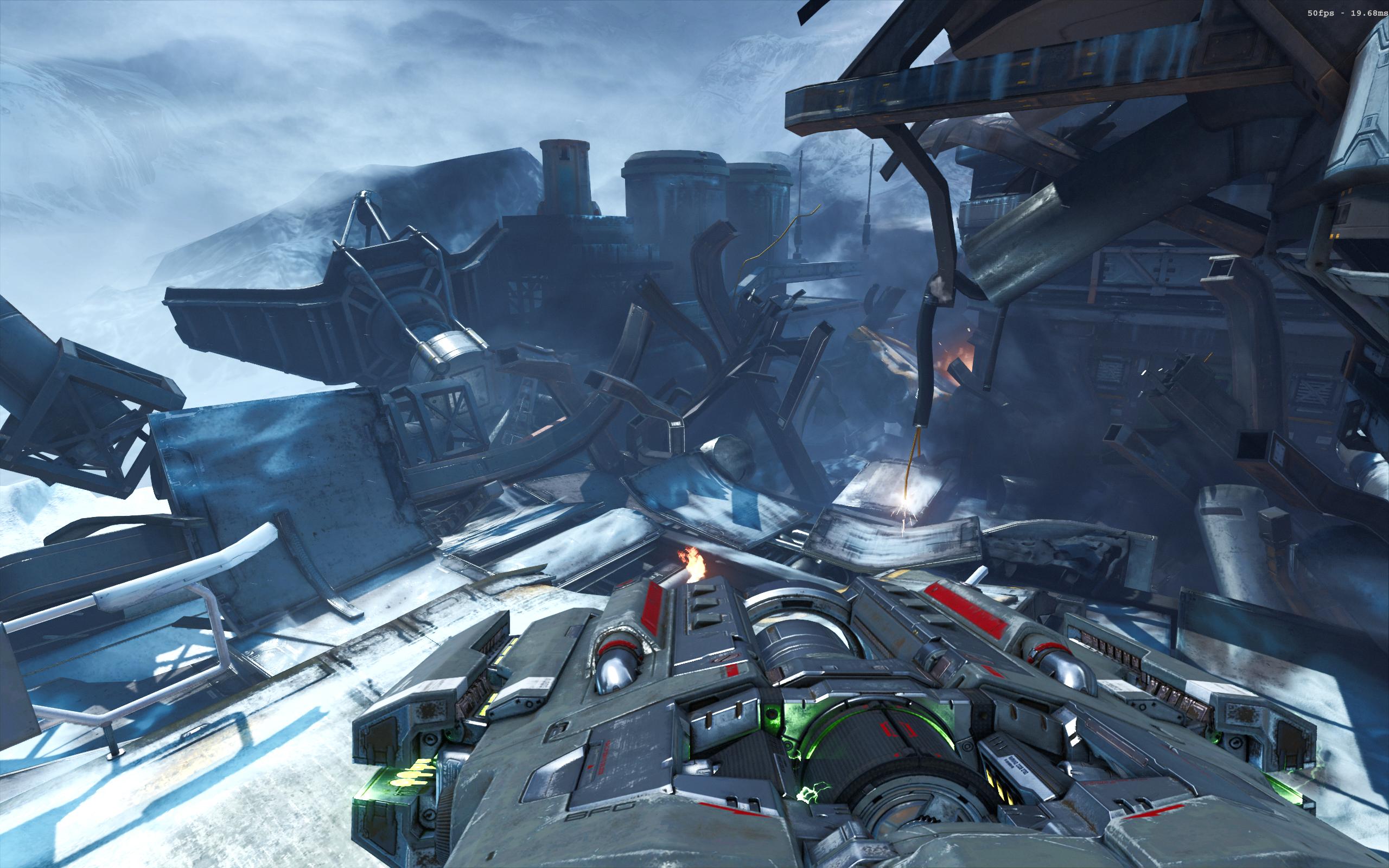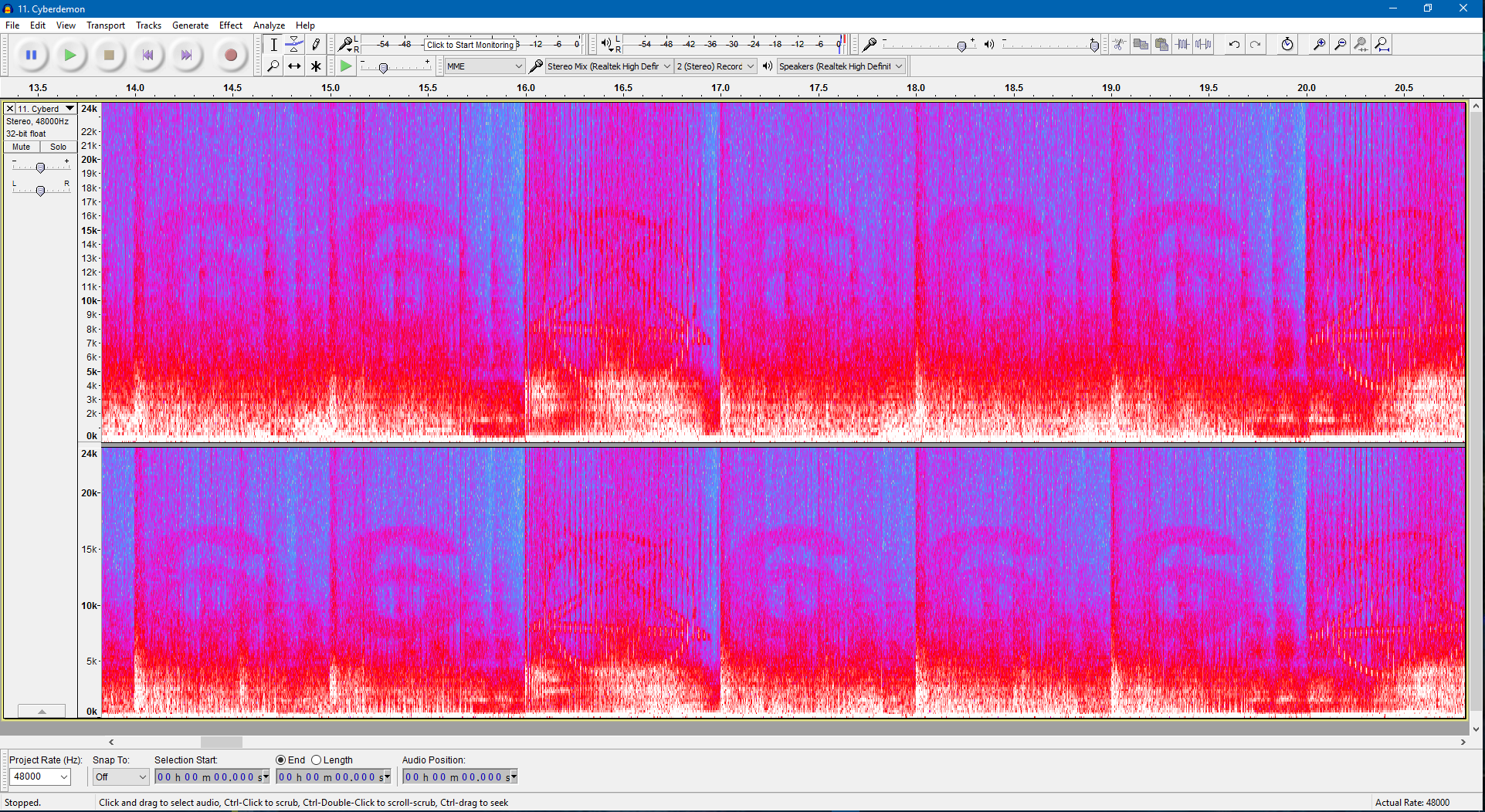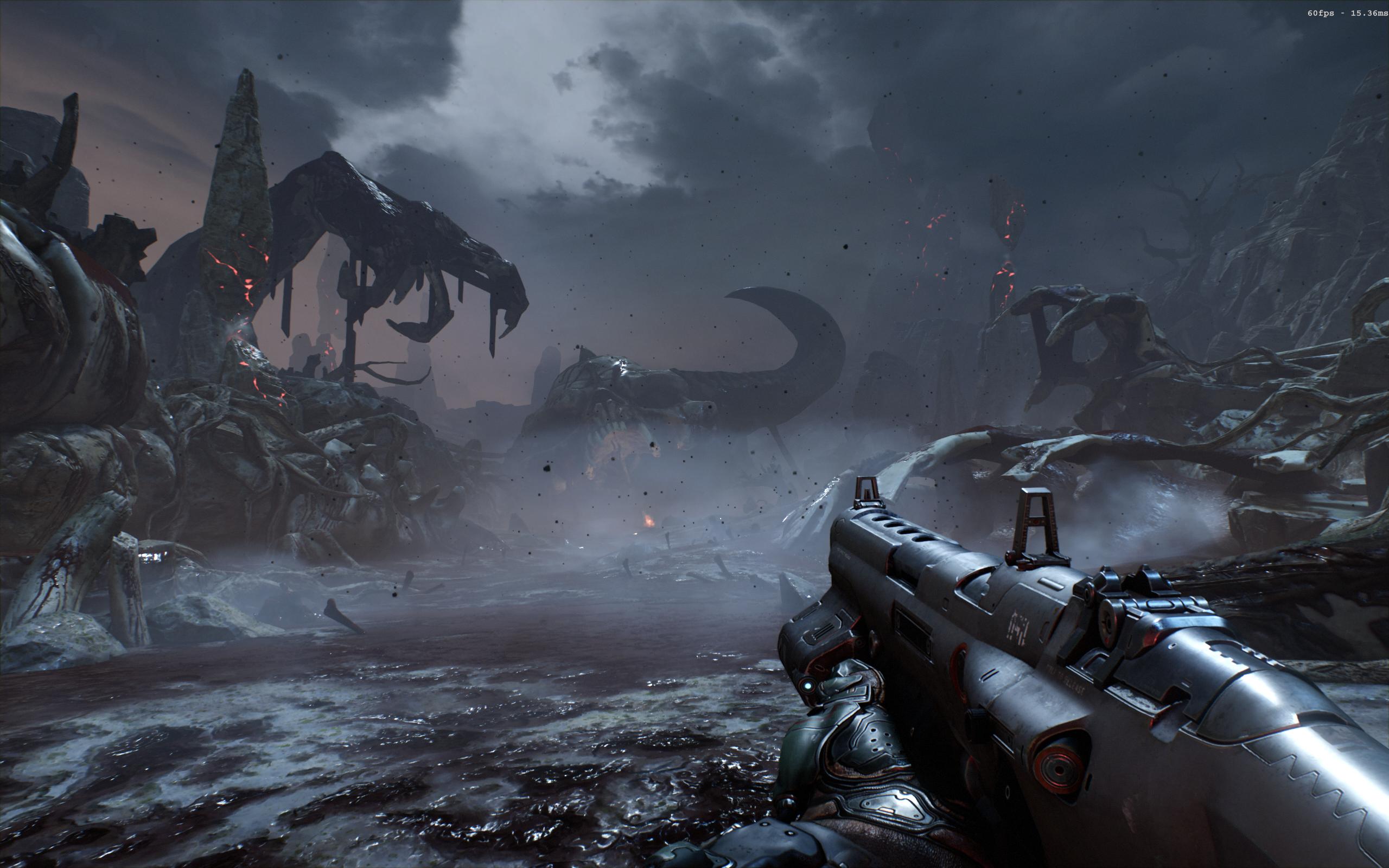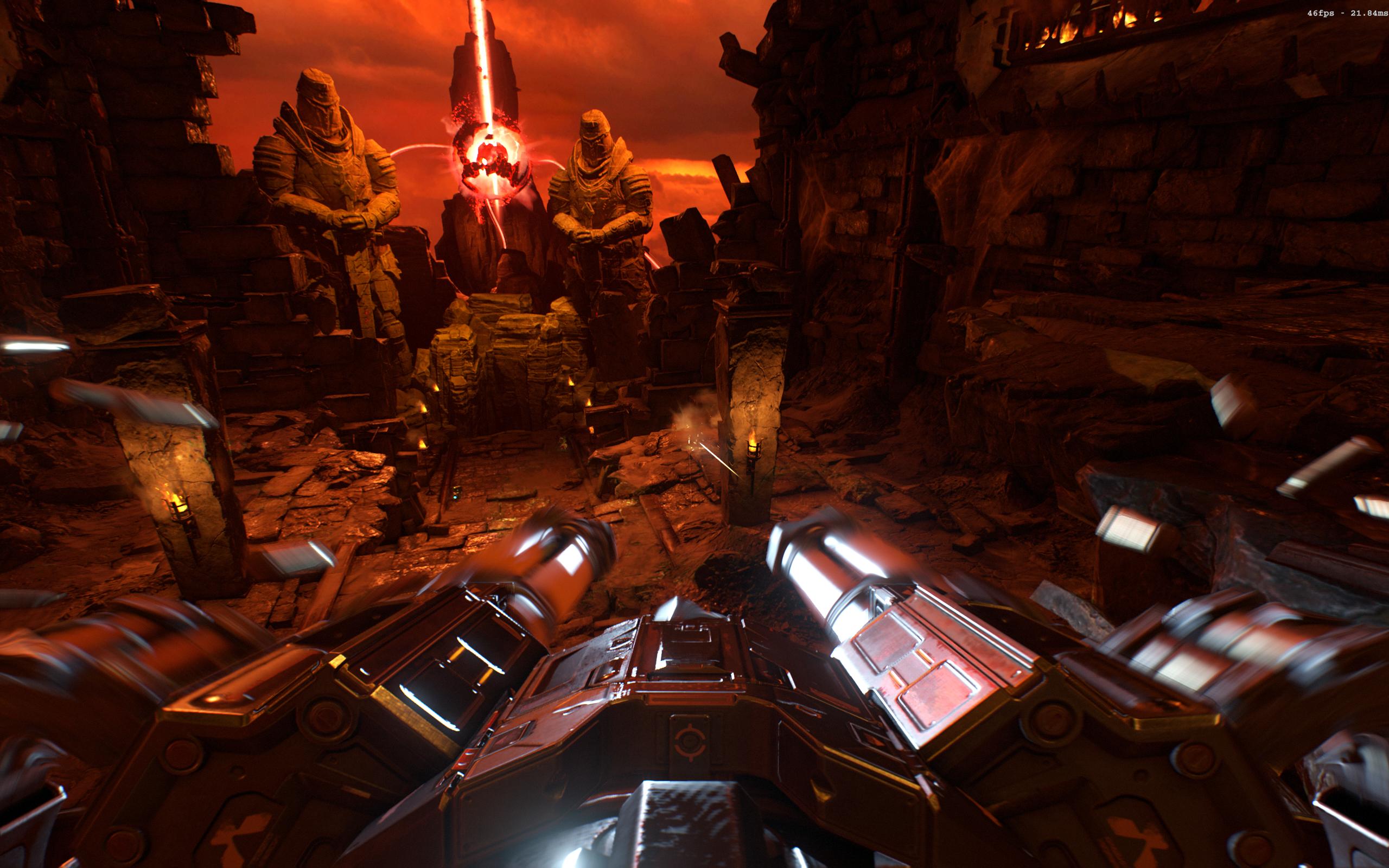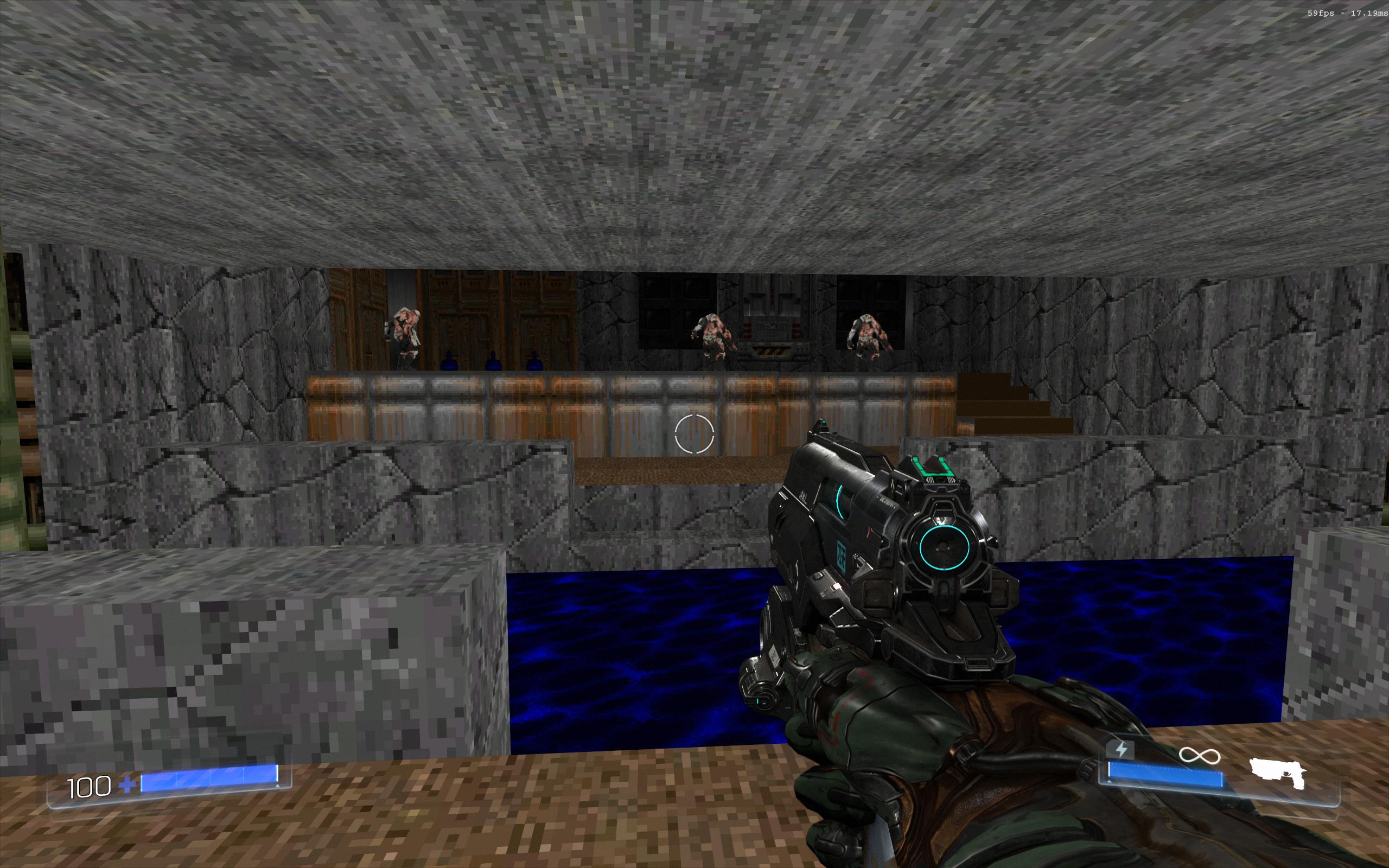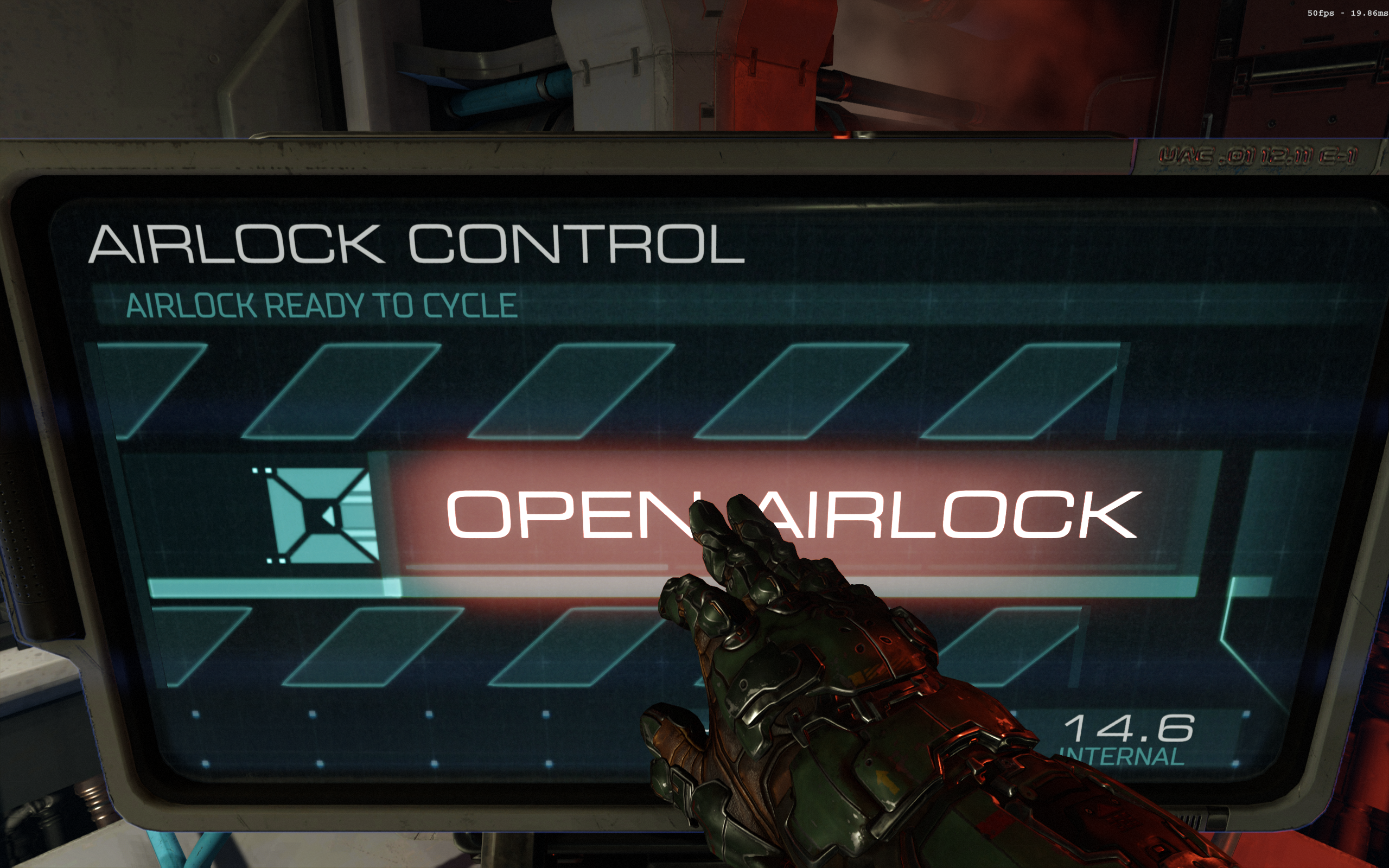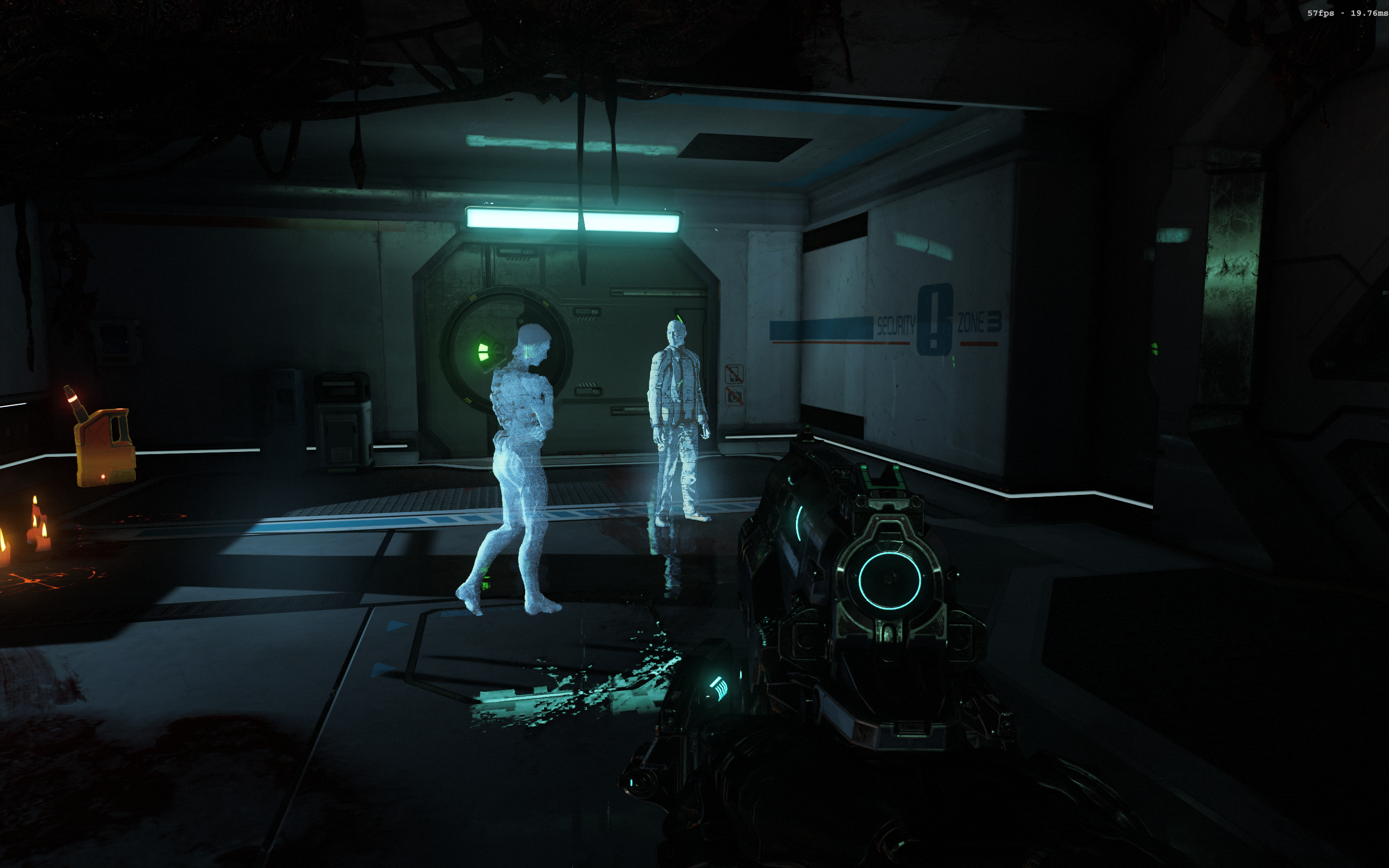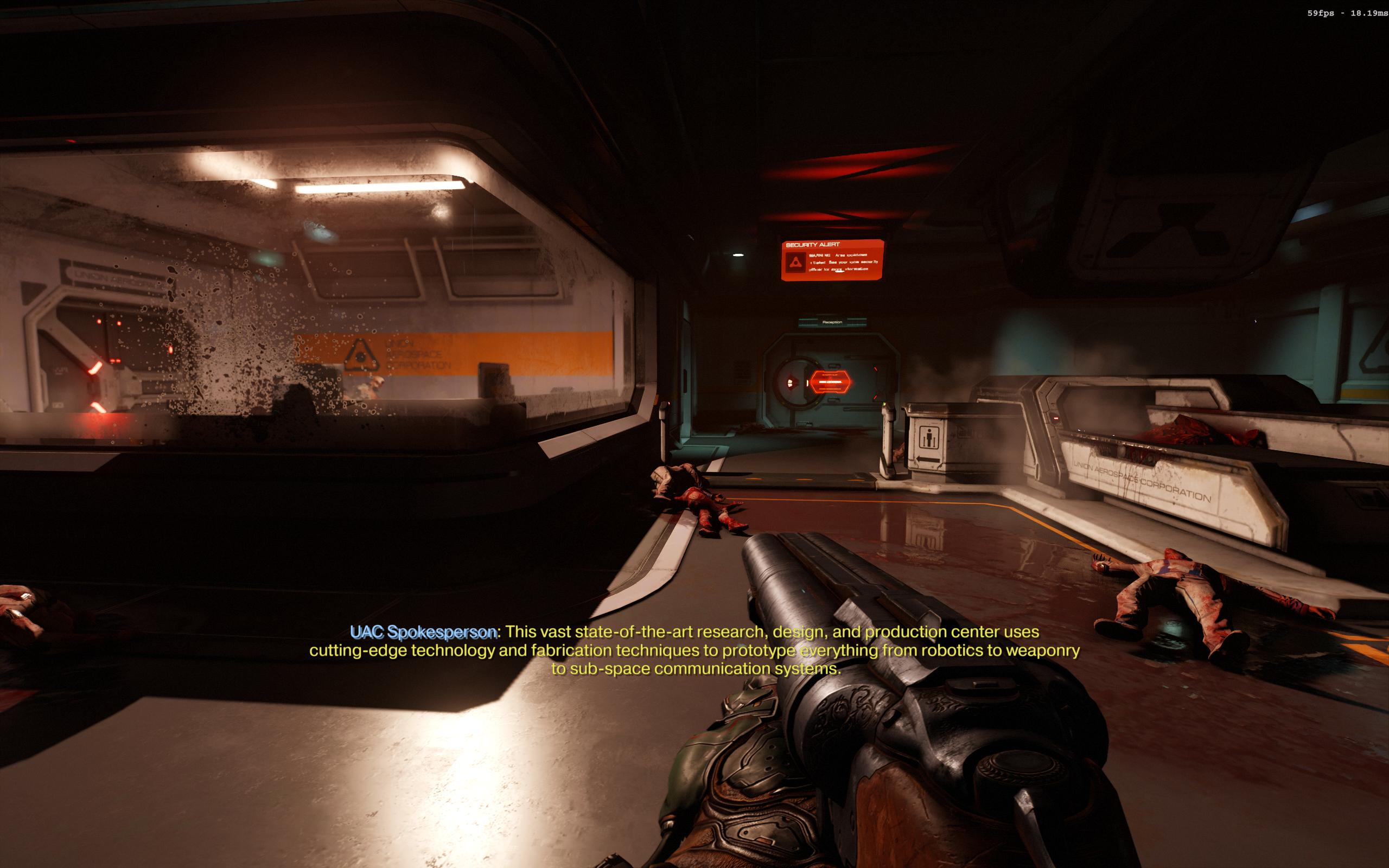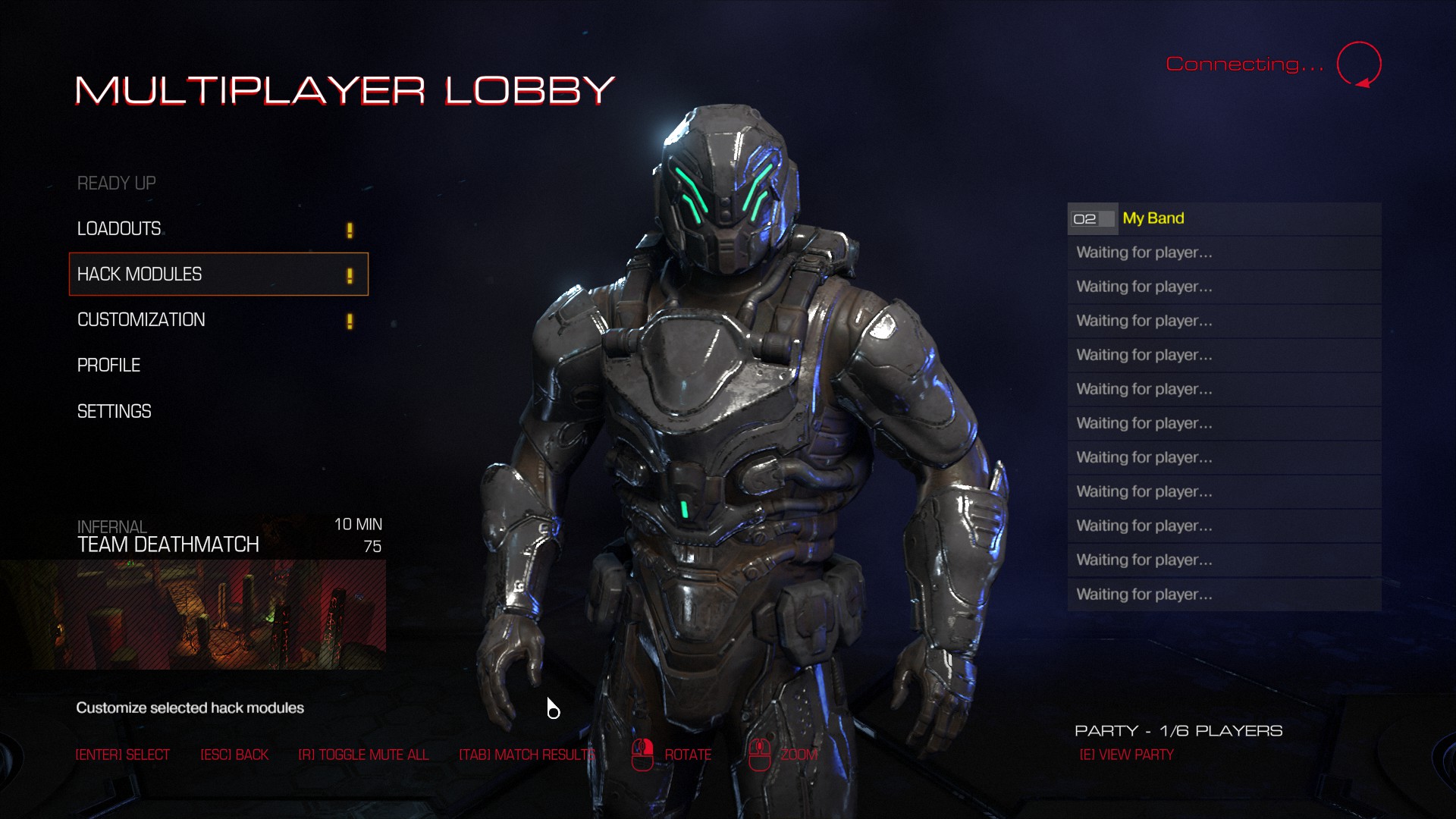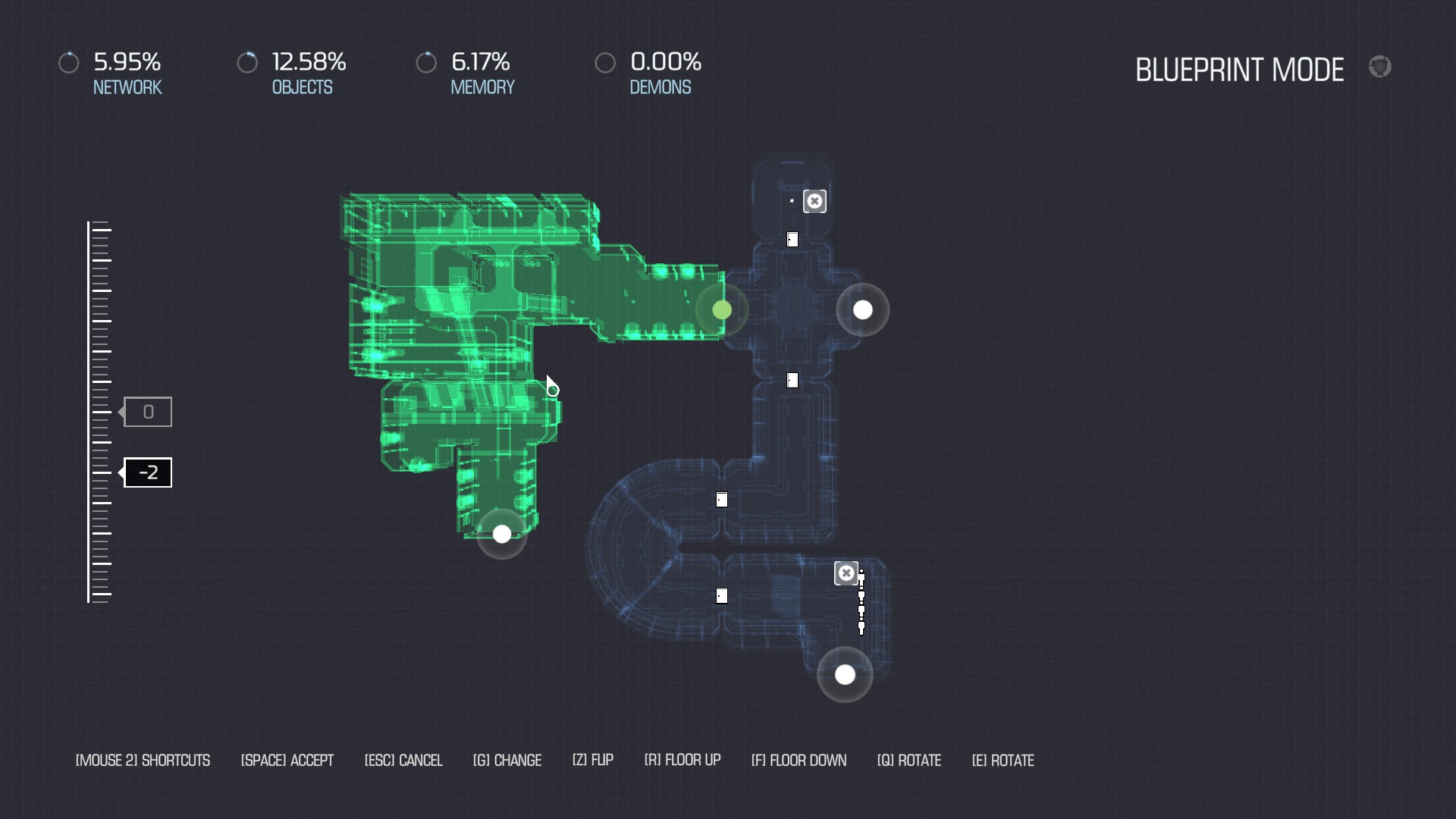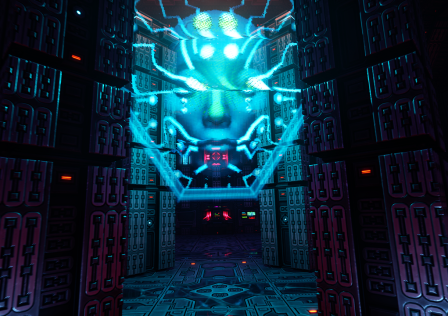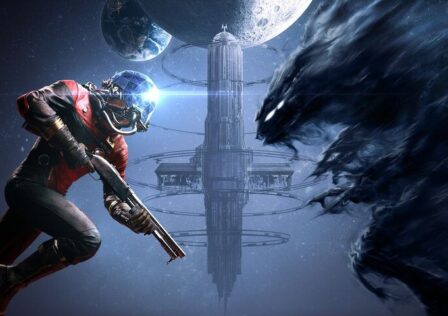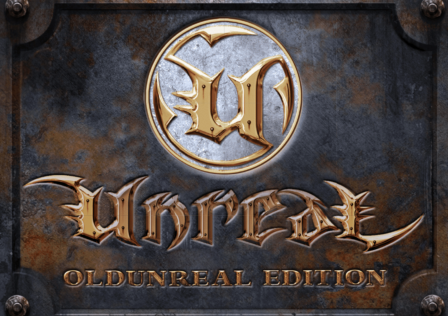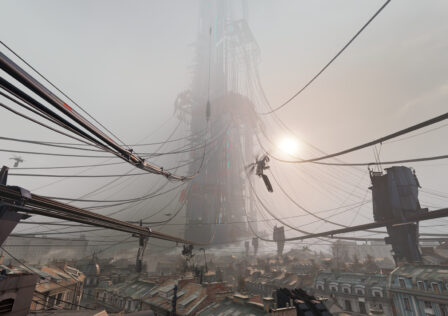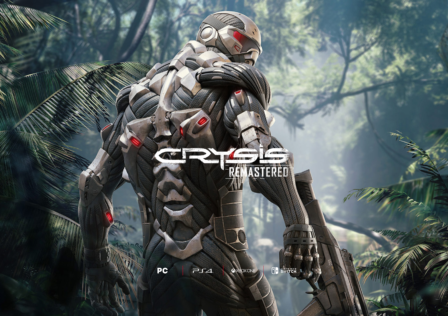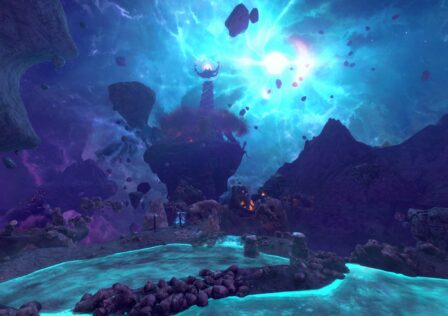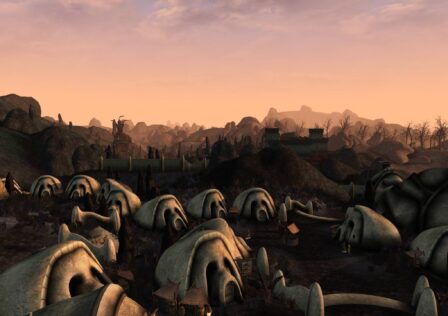DOOM, also known as DOOM 4 or DOOM 2016, is a reboot of the classic FPS franchise developed by id Software. The months leading up to the game’s release were filled with some dread and negativity as it’s multiplayer beta was met with largely negative responses. Bethesda also did not release review copies for the game on time, something that made people question it’s quality as well as the publisher’s trust in their own product.
Despite all that, on release it managed to turn around the expectations and is now generally considered to be a great game by both critics and fans alike. We have waited for 12 years to see this game… so is there merit to this impressive 180 in public opinion?
Graphical Fidelity and Audio
Powered by the new id Tech 6, DOOM looks and performs amazingly. Id Software has really outdone themselves this time. Whilst the previous id tech 5 did perform quite well even on low end systems (after some patches and driver updates at least) it also suffered from a fairly flat and non-dynamic lighting system and noticeable texture pop-in. However, the new tech largely fixes all of these issues. It represents a truly massive overhaul of an ambitious but ultimately flawed game engine, with some lessons taken from their other masterpieces like id tech 4. DOOM certainly is built to impress.
The game looks outstanding. The environment is sharp, well detailed and has generally crisp texturing. Due to its megatexture (Virtual Texturing) technology, large parts of it are unique and do not repeat, meaning the world looks that small bit more authentic and pleasing (though beware, it loves VRAM). Sure there are occasional lower resolution textures or not as sharp models and meshes, but considering the size and complexity of many levels and environments as well as the speed at which player and demon interact or move within them, it can be forgiven. Additionally, they still blend in well with the art style of the game. This is helped by enhanced materials processing which helps make objects “look” like what they are supposed to be made of. Their interaction with light has also been reworked to dramatic effect once again and normal mapping is used to full effect.
Screen Space Reflections and dynamic lighting are back in the engine and id has made great use of them. They add atmosphere and depth to almost any given scene, improving immersion. Shadow maps are used as well, unlike the mostly static id tech 5 pre-baked in shadows. They always look smooth and clean, with very good filtering all around. Combined with some type of advanced Screen Space Ambient Occlusion and well… id software really nailed it. It looks awesome.
The new Temporal Super-Sampled Anti-Aliasing does a great job against shimmering, edge-aliasing and in-surface aliasing. It is one of the best AAs I have ever seen and it helps console gamers a lot. However, for those that are looking for no AA or simply prefer a different method, the PC version includes more options. VSR and DSR from AMD and Nvidia can also be used to great effect on the PC.
Depth of Field is again nailed. You can of course turn it off or on as you wish, but for once game developers did not overuse it. This high quality version of the Bokeh per object depth of field is light on all systems and is used sparingly and only in certain moments of the game.
Motion Blur is top notch. The special blurring technique, proven in Doom 3: BFG Edition, is back and even more advanced. With an extremely high sample count it can enhance the feeling of speed and power the Doom Marine oozes as he obliterates the hell spawn as well as make the more powerful demonic enemies look that extra bit more threatening. Of course, you can disable it if you wish.
Effects work is once again excellent, and the engine takes it without hitching. Alpha textures and smoke accept shadow and light from the environment, which helps with immersion a great deal. GPU particles work flawlessly on both consoles and even lower end PCs!
Apart from that the physics are also quite decent. Light on the system resources, but awesome giblet and gore effects combined with ragdoll physics. The only true nitpick is that I would have liked more and more varied background destruction.
The model work on the actual creatures you fight is outstanding. When you see them in your model viewer or in-game, it is obvious just how much resources were dedicated towards their creation. High polygonal count, good texture work, great material rendering. Just a damn well done job all around.
id engines have always impressed with animation work. DOOM 3 was amazing with its creature animations for its day (still looks quite good even 12 years later) and one of the things id tech 5 really managed with Rage and The New Order was animation work. The new DOOM goes one step further even, with some of the best creature animations ever seen. They can go anywhere that the player can, their moves blend in and out of action sequences as well as getting hit or dying. Inverse Kinematics are used to full effect on pretty much all demons with hands and feet. The DOOM Marine’s own first person animations also ooze personality and power… it truly is a game that looks even better in action.
The most impressive thing by far though is not how good all of this tech looks, but rather how well it runs, especially its Vulkan version which was recently patched in. Whilst it does really want a Quad-Core CPU and is a bit heavy on VRAM, the rest of it is very well optimized. However, word of caution, older Kepler GPUs can have issues. Still, those should be fixable with both drivers and patching. A shame, it really is, but it is not too bad overall. The performance on consoles itself is excellent due to how well it can change resolution on the fly in order to keep 60 fps locked!
This is the first time John Carmack has not been at the helm of a major id tech engine. But the experienced veterans and programmers (some from id, others from Crytek as well as other veteran studios) did not disappoint. Seems like once again they have some of the best overall technologies on the market. I would not consider this the best looking game, but it is certainly one of the really well made ones. Beautiful, fast, optimized and with interesting technology. A true return to the powerhouse norm.
Presentation
Pushing visual fidelity and technology is a very good goal, but what matters even more to a game’s look is art style. And here id Software did quite well. The new DOOM is a very colourful game (unlike its predecessor) with a fairly wide range of different areas. From industrial zones with heavy machinery to laboratories to foundries with wide open spaces… ancient hellish temples and strongholds or the classic Martian surface… it is definitely a good old school game with its own spirit and style.
A clean Science Fiction base aesthetic is what id was going for with the UAC base and honestly, to me they succeeded. It is not the overtly complex linear and semi-realistic design of DOOM 3, but it is still pretty damn top notch. The dimension of Hell whilst not as strikingly insane and ethereal as those of the previous game are also extremely interesting and feature almost breathtakingly awesome vistas.
Sound design is something that is often more important than visuals even and in the case of id’s new baby, we have an absolute classic. Mick Gordon has already proven himself as one of the elites in the business (and his Wolfenstein tracks are some of the best game OSTs I have ever heard) and his work here just reaffirms that. Industrial metal and re-imagined themes of previous titles combined with other electronic music genres add a lot of character to the experience. Tracks speed up during action packed moments and slow down during exploration as many old school action games do.
Weapons sound beefy and powerful (except for the pistol) and the sheer impact of them hitting demons is very satisfying. Of course, it also seems to be one of the games that benefit from high end sound systems the most.
The Voice Acting for the characters in the story is pretty good. The few characters that actually talk were well acted and pretty darn well delivered considering the goals of the game.
When it comes down to UI, id Software did not disappoint. The game has a clean aesthetic when in actual gameplay and it is often fast and easy to navigate when in menus. With that said, it is obvious that consoles were the main focus when it comes down to UI design which in turn means that it is not quite the best for keyboard + mouse but it is not that big of a deal.
It is a bit of a shame that there are no manual saves, but to be fair, the checkpoints are very well balanced throughout the levels.
Blood and gore also has a fairly short time on screen before it disappears. Whilst we know it is to save memory on consoles and weaker PCs, it would have been awesome of id to have included a toggle that would make the removal of these things slower, so that we can bask in the chaos and destruction of combat for a bit more.
Gameplay
A total refresh of classical DOOM gameplay was carried out here. Simplistic but fun and engaging with some real depth if one wants to survive the highest difficulty levels or slaughter the demons with style.
The entirety of the gameplay is focused around quick, aggressive and action-packed corridors and arenas where speed and brutality are rewarded. The Doom Marine is reasonably fast as his default speed is greater than what most other FPS protagonists can do sprinting and is quite very agile. In the early game, a device is found that gives him the ability to carry out a double jump, something which greatly improves platforming sections and survivability in battle. Crouching and jumping to avoid demonic projectiles, judging distances well and navigating the environment… it truly is an old school kind of fun. Dodging correctly and quickly is what will save the Marine from death.
The way resupplying is handled is also really interesting. Whilst classical health, armour and ammo pickups exist alongside health stations, many resources are actually drop from kills. This was a design choice in order to reinforce a fast paced, close range combat gameplay.
The enemies themselves are quite varied in both their capabilities and design. A very colourful pallet of bad guys awaits. From low end zombies that are barely a threat to high tier Barons of Hell that act as local boss monsters and anything in-between, enemies are interesting both in their overall strength as well as abilities. For example, imps move around and are quite agile. Their ranged attacks and aggressive AI help them compliment bigger, tougher but slower enemies such as the mancubus really well.
It is this essentially complementing design and wave balancing that make the enemies truly dangerous. Adapting to them is a lot of fun. Speaking of which the AI in the new DOOM is also quite good, considering the type of game we are talking about. They don’t use super advanced tactics but rather are just very mobile and interesting to really hard counter. They don’t seem to get stuck and the navigation is truly top notch. Some enemies also exhibit simple group tactics and are very aware of their surroundings whilst engaging the player. Combined with the previously mentioned animation engine… well the monstrosities really look damn well in action.
Monster infighting is back and it can be a lot of fun to witness. It can help lower the number of enemies in a given area, but it is generally hard to trigger or encounter. Still, a very cool “feature” of the monster AI!
The way boss entities are handled is pretty standard. They are big powerful enemies that are encountered in arenas and have to be fought with all of the player’s firepower. Special AI and design is used, but the idea is straightforward.
Speaking of firepower, the arsenal is also quite diverse. Iconic guns such as the double barreled shotgun, plasma rifle and chain gun return along with new additions such as the Gauss Rifle and heavy machine gun. Apart from the pistol which is a bit of a disappointment, all of the weapons are somewhat balanced and have strengths and weaknesses. The unlockable weapon modifications (2 for almost all guns) and their further upgrades allow players to customize a given weapon’s power and capabilities to a reasonable extent. For an example, one can mount a grenade launcher to the shotgun or give the rocket launcher the ability to lock on targets. Of course a player can unlock all addons and switch them throughout their weapons during battle in order to increase effectiveness as the situations change. A bit annoying to be fair but it does make planning and quick thinking be a bit more rewarded in the midst of a chaotic battle.
What is quite interesting is the way id software handled the BFG 9000 and chainsaw. These are now special weapons and have unique functions. The BFG is actually simple… it kills almost every single thing in the room as it should and acts as a sort of anti-boss or high tier enemy rifle or even room sweeper. Can pull you out of a tough situation but is to be used sparingly as ammo for it, whilst not rare, isn’t a frequent drop.
The Chainsaw on the other hand acts as a brutal on the move resupply station or single enemy slayer. It has a limited amount of “fuel” that it uses up when it kills enemies. High tier enemies require more fuel than low tier enemies, so in a sense a fully charged chainsaw can be used to take down monsters such as Barons or Mancubi. Its special mechanics as it brutally slaughters the demons allow it to give the player an extra supply of ammo which can often save the day during an intense fight!
Grenades and other throwable weaponry can also be used to great effect. There is a very interesting Syphon Grenade that takes health away from enemies and gives it to the Slayer, whilst the hologram grenade creates a distraction which can confuse the demons.
As the player damages or staggers enemies, they will often have the ability to take part in Glory Kills. Those are very fast and brutal melee executions that have added bonuses such as higher loot drops for both health and ammo and offer a brief window of invulnerability. In essence it reward aggressive and fast moving and killing around the maps.
There are other, subtler and more strategic effects to the glory executions. You’ll find yourself farming enemies for their drops, taking care to avoid causing too much damage to weak enemies such as the possessed zombies so as to use them as “fuel” during the more intense battles.
Their only true problem has to do with how at one point the animations obviously will begin to repeat. id did their best to make a lot of them… but it still wasn’t enough .
There is also some added level of customization a player can partake in. The demonic runes which can be found in the environment and unlocked via a special, out of the map, often gimmicky (but fun as a temporary distraction) challenge can be used to give the Doom Slayer some added powers and bonuses. For example, one can tie in the Glory kills to some of the runes. If you equip Seek and Destroy, a rune which increases the trigger distance, you can in a sense make the combat even faster paced and use the executions as a way to get in and out of cover. There’s even a rune that makes staggered enemies almost unkillable, so you don’t accidentally finish them off before initiating their glory kill. Of course, those are only examples, many more combos remain.
Other upgrades a player can find are the so called Argent Cells. Once found they can be used to upgrade one of three things – armor, health and maximum ammo. Of course, If you explore the levels well enough you will have all 3 maxed out at one point, but until then it is a choice that has to be made. There are also Praetor Suit upgrades that can be scavenged from dead power armor space marines which can some more bonuses or powers to your character.
All of this sounds great and all, but level design is the key to making a shooter work with such complex and complementing mechanics. The DOOM reboot relies on arena combat for most of its big combat sequences. Often, you enter a big room or area and have to slaughter every single enemy in its vicinity or find a certain item/object… and then kill everything. There are also certain intense corridor sections where all hell breaks loose as special enemies try to impede your progress.
The arenas themselves are modeled in a way resembling classic multiplayer maps with jump pads, ammunition, teleports and even power ups to aid a smart player. Considering how well the AI navigates their environment, this design really does work to the benefit of the game. The power ups themselves are also quite standard but the sheer brutality and finesse (in murder) they can give to a good player is downright beautiful. Id Software used the word “skate park” to describe these murder arenas… and honestly to some extent it makes sense.
Some levels of the game are also relatively open, vertical and complex and may allow the player some freedom in tackling objectives. A welcome change from mostly linear action shooters, which resembles the good old maze-like levels of yore… those are also some of the finest missions in this reboot.
The attentive Doom Slayer that explores the environment will find not only weapon or suite upgrade points and runes, but also the classic id software secrets. Some are miniature Doom Marine dolls which unlock viewable models in the main menu, whilst others (often quite hard to find) add up to entire classic levels from DOOM 1 and 2 to be explored and played by the player as extra content! The enemies were changed to their closest 2016 counterpart and same for the weapons, but it is a cool idea and does tingle nostalgia whilst adding content.
To aid in exploration, the developers have also created a pretty damn decent map in good old DOOM tradition. I am torn on it though, as whilst it does really aid finding your own way in certain complex maps or looking for secrets… it also makes finding most of said secrets fairly easy, especially once the automap for a given area is found. The at times excellent secret design (sometimes involving operating background machinery or navigating complex world geometry) … just becomes a bit less satisfying.
Generally it is obvious at this point that I think the game is extremely well designed and is a lot of fun overall, but I do have some nitpicks.
Whilst the map and wave design is great and I personally enjoy the close range gameplay and pacing, it is a bit of a shame that often enemies are spawned in after you have already entered the arena. This in essence limits the ability to make use of accurate long range fire and also hampers the Assault Rifle’s scope upgrade. Now there often are zombies here and there, but killing them before the actual slaughter has begun is counterproductive and a waste. Some more enemies of the reasonably powerful variety being in a given area even before the player has stepped in it would not only have given more validity to such game styles, but also aided immersion.
The game may have a lot of weapons in its singleplayer and all of them are well balanced, well made and with extra firing modes, but it is a shame that not ALL of the weapons of the game are used in the campaign. Some of the guns are actually only for Snapmap and the Multiplayer and just aren’t used in the SP… which is a bit of a shame as the Lightning gun is a lot of fun and would work wonders. So would the Static Rifle, a precision weapon that gains power when in constant motion and drains when idle.
I think it is also a missed opportunity that the terminals and computers are simplified. In Doom 3, using a terminal in the game world was an extension of the players capabilities and felt truly immersive in a sense. It let the player interact and connect to the science fiction world even better. Here, interacting with the terminals or equipment just makes the Slayer push it with an animation. A missed opportunity for some added interactivity and immersion .
A final nitpick I have is a very strange one. You see, whilst the game’s arenas and enemies and ammunition delivery even are very well balanced, with complementing waves and design… it is almost a bit too well made. Allow me to explain. In the original DOOM games, you often had levels where one might encounter a huge amount of a certain enemy type or lack ammunition for certain weapons. What this meant in essence was that the old games had a more playful or even memorable level design. Tricks and Traps with its room filled with Barons and a single Cyberdemon? Memorable! The Gauntlet where a Cyberdemon and a Spider Mastermind are put into position where making them fight one another is easy? Also very memorable.
In a sense the reboot’s design, whilst really good is also a tad more sterile and lacks playful level design choices that whilst not always the most “balanced” were also a lot of fun and quite memorable to us fans. Still, it is very enjoyable.
Story
Let’s not mince words here, DOOM was never (and probably never should) be a game that relies mainly on its storytelling. One must know coming into DOOM that story was not a key feature the developers were focusing on. It is simplistic in nature and not the main focus of the title.
With that being said, id Software did still do their best to make it interesting for the people that like to get themselves immersed into a world. Union Aerospace Corporation
(UAC) announcers and panels contain background information (often humorous in nature) about procedures and scientists. Holograms of certain characters can be triggered and allow the player to peek into past events almost as if they were there. In fact, sometimes following a hologram in order to trace what has happened to its last known user can be what is needed to progress through the level, and it is honestly a pretty neat idea.
Numerous files can be found within the game world that contain interesting information about the demons or the scientific bases and their often bizarre activities. Others still, contain information about the main or secondary characters within the story and flesh out their motivations as well as past history. The protagonist can download them so that they can read them any time they want.
Speaking of characters, the reboot does well playing with them. Sure most of them are stereotypical, but well written and very well acted in a hammy somewhat comedic over the top fashion. The beats of the story are energetic and all of the people involved do their best to take it seriously.
The crowning achievement of id’s new game is the protagonist. Once again we have the DooM Marine (or Doom Slayer as he is now called) and he is a silent protagonist as tradition entails. What makes him work really well though is tied to his personality, more specifically how it is communicated. The developers were smart in their usage of first person animation as well as cinematography to convey both his opinion on events and characters as well as belief system (well… at least when it comes to demons ![]() ) . From the hate as he rips apart demons during the Gory Kills as he tosses their corpses aside as useless junk, to the way he looks and expresses emotion at certain key scenes.It truly is unique how much thought went into these small examples of humanity.
) . From the hate as he rips apart demons during the Gory Kills as he tosses their corpses aside as useless junk, to the way he looks and expresses emotion at certain key scenes.It truly is unique how much thought went into these small examples of humanity.
At the end of the story, we the players know a bit more about this insane monster of a human being. It is not some meta-idea about apathy to the very idea of a story in DOOM (which some people think he hates), but rather a simple in-universe disgust at the UAC’s stupid ideas obviously going wrong that drives his emotions… and it works. A true duality as the archetypal secondary characters go on about their serious story, the DOOM Marine already knows what needs to be done and he goes and does it with style.
There are also secondary elements that help paint a picture of the man. Demonic runes and tablets as well as special UAC articles flesh out the mythos behind the Slayer. The fact that these (to be fair simplistic but elegant) can work in conjunction with animation work and cinematography is pretty impressive and shows a real understanding for both the video game medium and love for the character. His stories and epics also act as a sort of self-referential commentary on past games, something that a franchise as legendary as DOOM is almost expected to have.
What we are left with in the end is a generally simple but well written story that enhances the game it has to server very well. There is some juxtaposing between the somewhat serious and hammy characters that are dealing with an absurd and somewhat humorous situations and the Doom Slayer, who is probably the sanest living creature on the entire Mars base. Once again it is strange but it works. However, do not expect complex or deep thematic problems, though elegance and style are in spades. The great thing is that people can choose whether to pay attention to the story or not. A problem though is with how many in-game cutscenes where an NPC is talking to the player are unskippable. That part of the design is a problem for most DOOM fans and is a shame as the rest of it is quite well made.
Multiplayer and Snapmap
The Multiplayer is not as dreadful as many people make it out to be. It is obvious that major inspirations were Quake Live, Halo and even CoD, but the actual end result is decent. Unlike old arena shooters where everyone starts with basic weaponry and slowly arm themselves as they traverse the map (which means that map knowledge is crucial), the 2016 version of DOOM simply spawns players with their chosen weapon loadouts and only ammunition and certain special weapons or powerups can be found around the maps.
Players can create loadouts and choose bonuses to take in battle. Those unlock via levels that are gained with experience. There is also a great amount of customization as to how one’s character looks. From making weapons look brand new or as if they have spent the last 4 000 years in the Martian soil, to equipping Crusader or Daemonic-looking powered armor… this part was done really well.
Maps themselves are generally well made and are in a somewhat old school arena fashion. Reasonably balanced and visually polished, there is not much I can say about them.
The only more interesting (and somewhat problematic) new addition are the Demon power ups. When taken, a player turns into a powerful version of one of the campaign’s demons (though to be fair, one of the demons is MP only). The thing is, all of these just make the players too powerful as their added HP and burst damage per second are just too much to be killed quickly by individual players. It is somewhat unfair. Yeah, a person with a quad damage power up is extremely powerful, but they still die fairly easily and can be killed in solo combat, but a demon is just too different to be balanced well. At least that is the current situation, it might improve in time… or not.
A very interesting mode was added to the game as well – possession. In it, at the start of the game 2 players from a team are chosen to turn into demons. After that happens they get infinite respawns and have limited time to kill all the other humans. Every human marine that dies becomes a demon as well… it is a very fun and exciting mode overall. Kind of like the Crysis 3 Hunt mode or a simplified version of The Hidden.
Overall a solid, decent mode for players. Lots of customizability, fun game modes and good map design. Problem is its balance and… some of the concessions with classic arena level design in my opinion make it a bit less interesting than what it could have been. It wont amaze like dedicated multiplayer games, but I think it is pretty neat.
Snapmap is very welcome addition and there is a lot to love about it. It works by giving players the ability to snap pre-made rooms together and then edit them by placing and customizing monsters and items. It’s ease of use and speed are applaudable and the simplified coding utility it comes with works wonders with the creation of more complex scenarios or maps. Honestly, every game/map editor should mimic it, it really is just that good!However, with all that being said, it is also very limited as a tool. There are hard limits on number of rooms as well as demons that can be spawned in total and at any one time. The easy to use pre-made rooms, whilst great in quantity and quality, still leave a lot to be desired in terms of customization. What ends up happening is that often maps that may have very different gameplay end up looking the same aesthetically which is a terrible shame. Also, whilst one can play with weapon, item and enemy values, they cannot modify them visually (much) or play with their AI routines to a sever extent. An extremely limited amount of players per session also hampers its ability to make multiplayer maps or modes (bar Co-Op).
Now to be fair, id Software and Bethesda have promised that extra rooms as well as a “Hell” template will be released soon. Those 2 will somewhat alleviate some of the issues I have with the editor right now, but it really is not a true fix. Far from it, snapmap as great as it is for a novice or even intermediate map maker can not satisfy true high end modders. For that to happen, the hard limitations on rooms, size and demons must be completely removed. I know they were probably imposed due to consoles, but even then… why not let console map makers decide how to do things on their own? And why limit PC Gamers in the first place? New templates and rooms are great, but it needs either more functionality or secondary editors that work in conjunction with it to truly make it great. As it is, it is just a decent idea with a lot of potential that is currently inferior in capabilities to real editors.
*EDIT* id did add the Hell snap maps to the editor, and even added a “classical” (DOOM 1 and 2) snap map module as well! Good thing really!
*EDIT 2* After the release of the 6.66 update, DOOM’s multiplayer received all the DLC content for free, for all players. It also brought some balance changes too. Its improved for sure and is worthy of your time to at least try out. I certainly overall like it.
Overall
Id Software’s new game is a true return to their FPS strengths. Confident, simple, elegant and with some real depth… it is not without its faults but I can recommend it to all shooter fans. Rage may have been a (interesting) disappointment overall, but it seems that they are finally back!
Presentation: Strong art direction, good voice acting and generally decent UI work, make DOOM a very well polished product. The music design and how well it is woven into the experience deserves special praise, as it is bloody excellent! Still I would have liked an even faster, PC-centric UI as well as no loading screens between switching from Single Player to Multiplayer or Snapmap. Lack of a manual save system isn’t such a big deal with this reboot, but I would have appreciated it. Thankfully it is a Steam installation. 17/20
Story: Do not expect anything complex or deeply involving here. What is interesting though is its lax approach towards storytelling, quite unlike many modern games. An involved player can find some reasonable character motivation and depth if they want to. Background world information which is found or seen throughout the environment is also appreciated, but id did well by not making it a requirement towards appreciating the experience. However it is a bit of a bummer that some cutscenes are essentially unskippable. Kudos to the way the Doom Marine was made. A silent protagonist that has at least some depth whilst also having a personality is a nice touch to the experience. 14/20
Gameplay: A fast paced arcade first person action game with style. Good pacing, well designed combat arenas and corridors coupled with big open maps and decent amounts of exploration… they even have a somewhat maze-like (at times) level design! A very confident gameplay loop was chosen for DOOM and id stuck with it completely, showing us that they still got it. Even the Glory Kills do not feel like an afterthought. Whilst I would have preferred a more playful design to both waves and arenas as well as a few other nitpicks, there is no denying that we are dealing with a well thought out, polished project born out of passion. 18/20
Audio & Visuals: Visual Excellence! The game is one of the best looking shooters out there right now. Whilst I would not place it as groundbreaking technology like DOOM 3 for example, it is certainly a fast, optimized, beautiful game that few others in its sub-genre can match. Incredible animation work all around coupled with awesome sound design and quality… top notch work here! 19/20
Lasting Appeal: The game is fairly long for a linear shooter. The unlockable Nightmare and special Ultra Nightmare modes (and a recently added Arcade mode) as well as its dynamic level design do allow it to have a good amount of replayability. Added classical maps and other challenges give a bit more as well. The Snapmap, for all its faults, allows the game to have a decent amount of added value and content. And for the rest, there is always the multiplayer. So a pretty good amount of content. 17/20
Total: 85 /100 …One Hell of a Game!
Here are some related links about DOOM that I find interesting:


